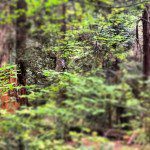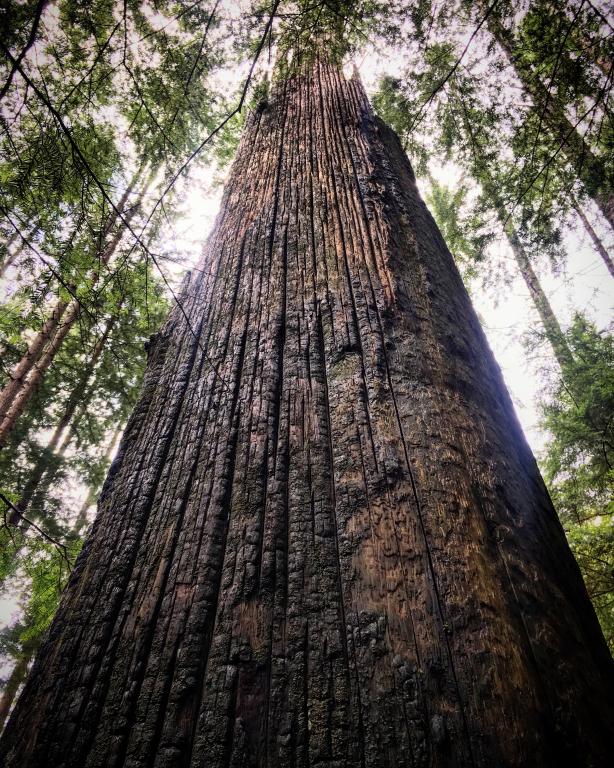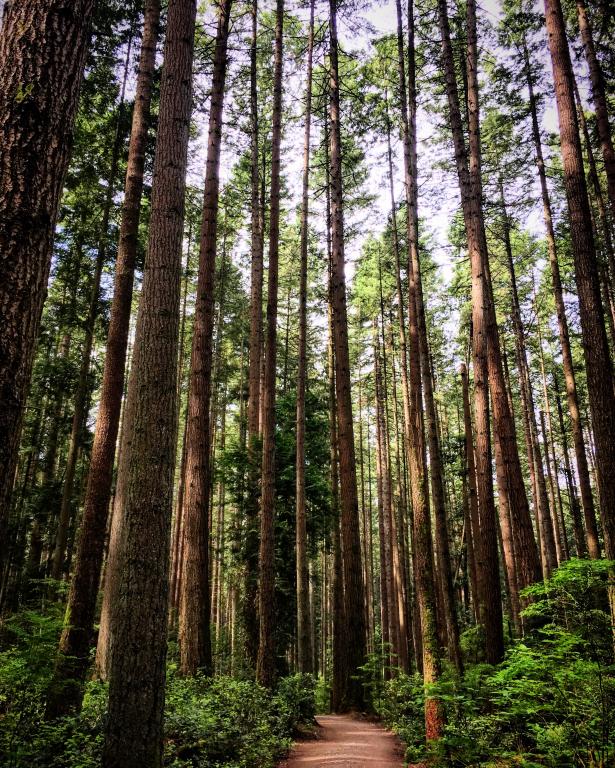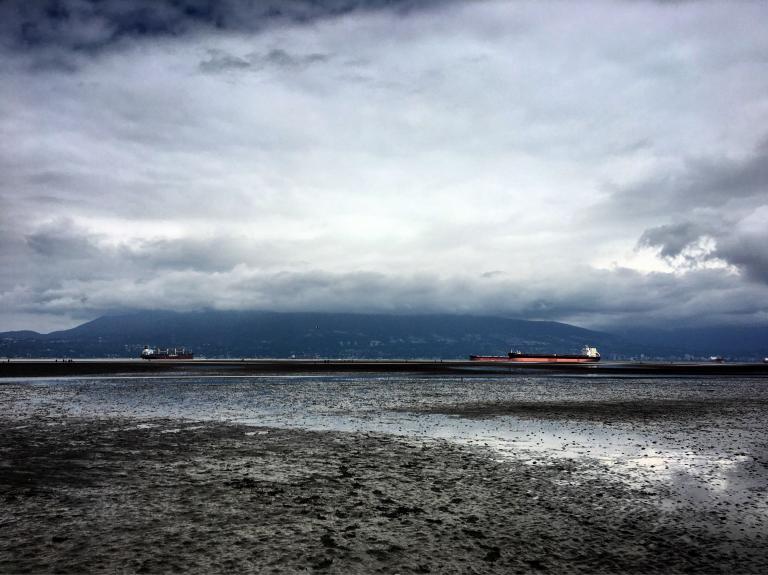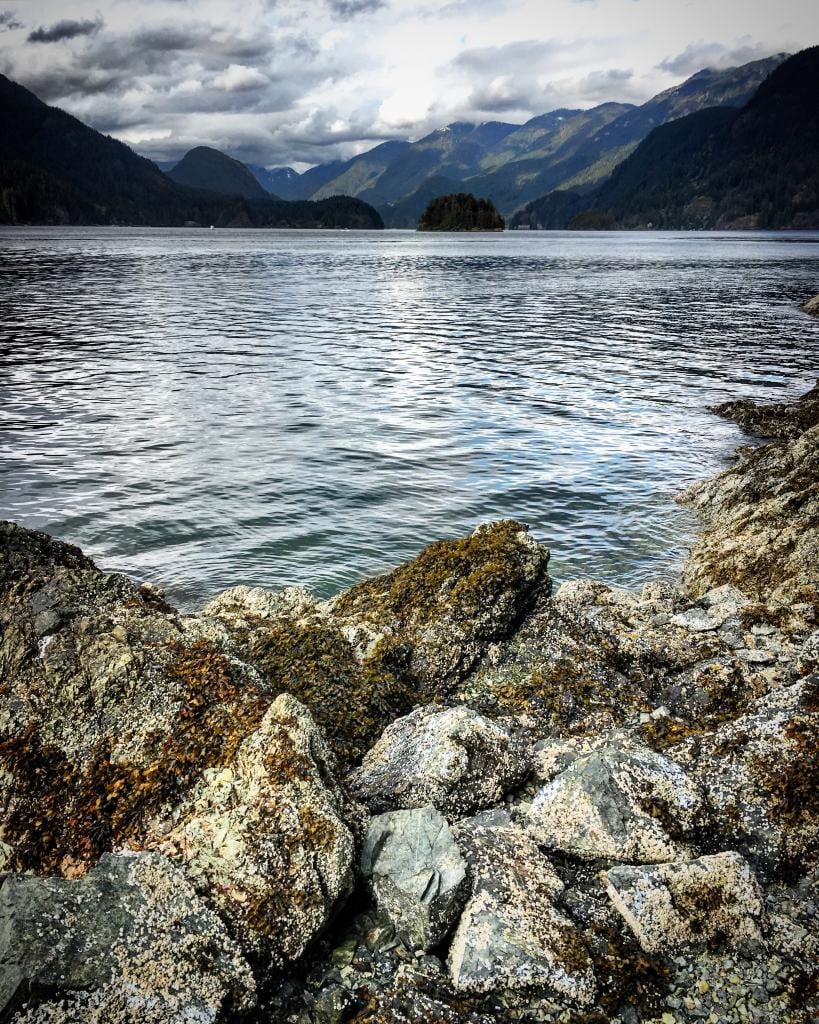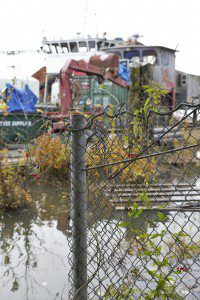
Crossing a small pair of train tracks, the smell of fish grows stronger and the screech of gulls grows louder. I walk to the end of a small alley, and duck around an open fence where a tiny patch of green hides an even tinier stretch of river bank.
From what I could tell on Google Maps, this was the only place for miles that I could access the Fraser River on foot. Walking the 3.5 miles at a leisurely pace, through Vancouver’s charming suburbs, I had taken a more or less direct route south from my home in Cedar-Cottage. As I walked the quieter residential streets parallel to Knight Street, I said short Christian mantras softly to myself, and greeted Sikh men in turbans as they cleaned out gutters, or raked fallen leaves. One Chinese woman, was picking the leaves up by hand and pressing them to her chest, as if they were a set of precious documents, ducking up and down in quick motions. Trees large and small wore a spectrum of colors from defiant green, to surrendered yellows and reds. Small murders of crows picked at the lawns, and cracked acorns or horse chestnuts on the hard pavement.
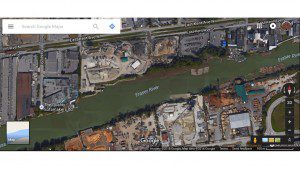
Standing on the narrow stretch of river bank, a cement factory to one side, and a seafood processing plant on the other, I could barely see across the river to the pulp mills on Mitchell Island. Along most of the southern border of Vancouver, the River had been sacrificed to industry, and I felt a mixture of sadness for the state of it, and adventurousness for having found it. A single hunched cottonwood tree, some lazy himalayan blackberry, and an assortment of weeds and grass gave the place a semblance of dignity, even though it was sandwiched between two industrial operations. I hesitantly reached down and touched the water, even though I felt like maybe that was a bad idea.
The Fraser is longest River in BC, and is know to Salish Peoples as the Sto:lo, Lhtakoh or ʔElhdaqox River. Its Anglo name is after Simon Fraser (1776-1862), an early explorer of British Columbia, and founder of the first European settlement in the Province. The River, drains an 85,000 square mile area, about the size of the state of Utah, but begins with a small spring at Fraser pass. From there it runs north and west past Mount Robson, through 180 miles of spectacular, narrow gorges in Fraser Canyon, on its way to the Fraser Valley and eventually to its mouth, braiding Vancouver, Richmond and Delta and into the Salish Sea. The mighty Fraser River meanders for 850 miles from headwaters to mouth.
Standing on the north bank of its lower reaches, I feel a pang of disappointment to see her in such a state, a state that feels moribund. Seeing the river like this, felt like seeing a relative in the hospital, their whole lives behind them, now emaciated and confused. When my grandmother was dying, I knew I wanted to see her, but each time, she seemed a little farther away. During one visit, about a week before her death, as we sat around speaking softly to her, unsure if she could hear us, she sat up and said, ‘Its ok, its going to be ok’, and laid back down in silence. I was glad that we were with her, and felt that our presence made some difference to her quality of dying. She was not alone.
In our society, we fear death, and confine its processes to medicalized and professionalized spaces. We fear seeing people when they are sick, because it reminds of our own mortality. The same can be said for the rest of Creation. When we perceive that a place is damaged, polluted, modified, developed, poisoned, we are hesitant to spend time there. I admit, I did not feel the same, standing on the banks of the Fraser, as I feel in a lush North Vancouver forest –peaceful, joyful, invigorated. But, in my anxiousness, it did feel important to me to simply be there. To visit her in all her degradation and distress. To mourn the loss of her body and the death of the beings that resided in her in greater numbers before we destroyed her.
The mighty Fraser may be close to death along this stretch, but there is hope that she may come back, in Creation, resurrection is always a possibility. Walking back, through the fish-stenched alley, I hoped that my presence on her banks, gave her just enough hope to hang on just a little bit longer.

